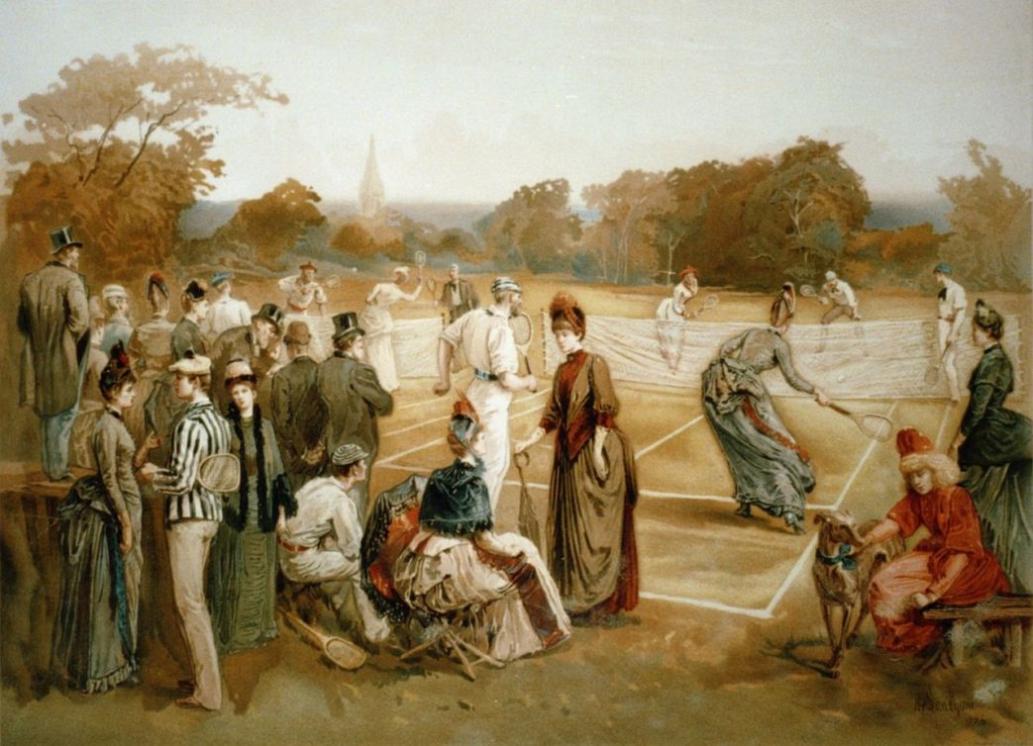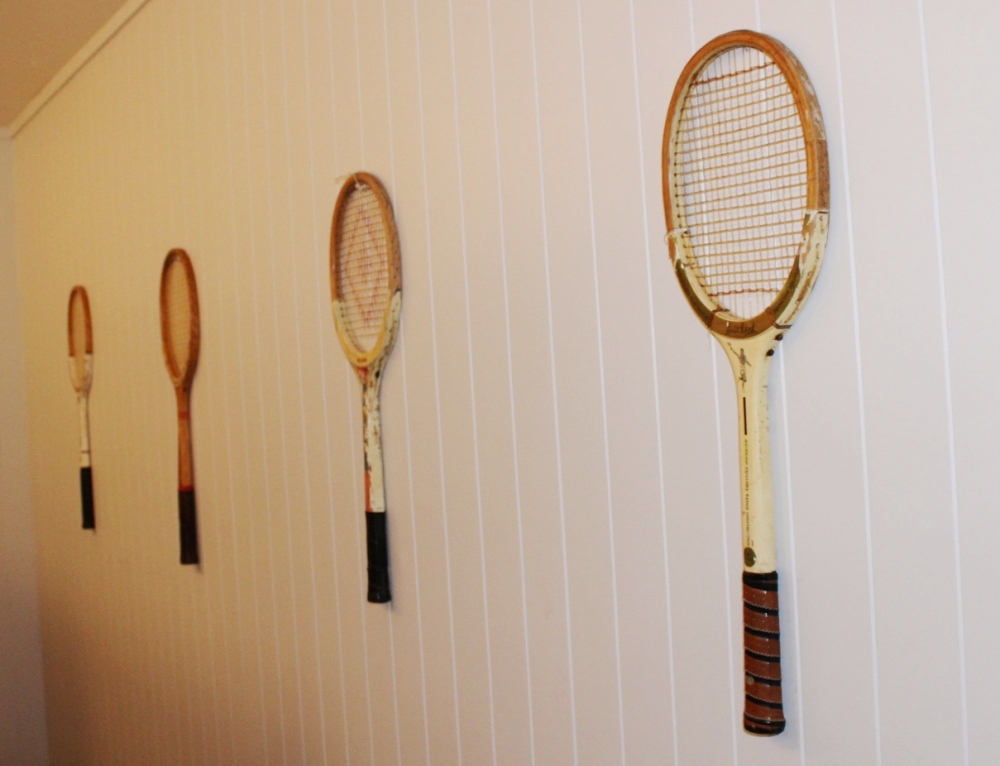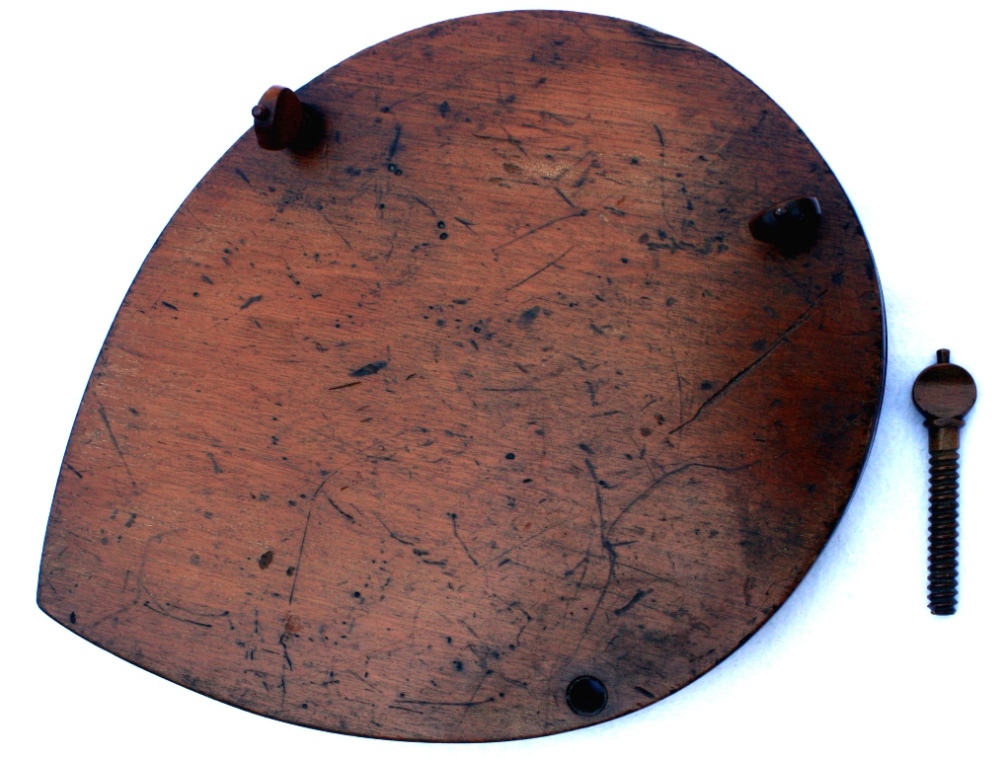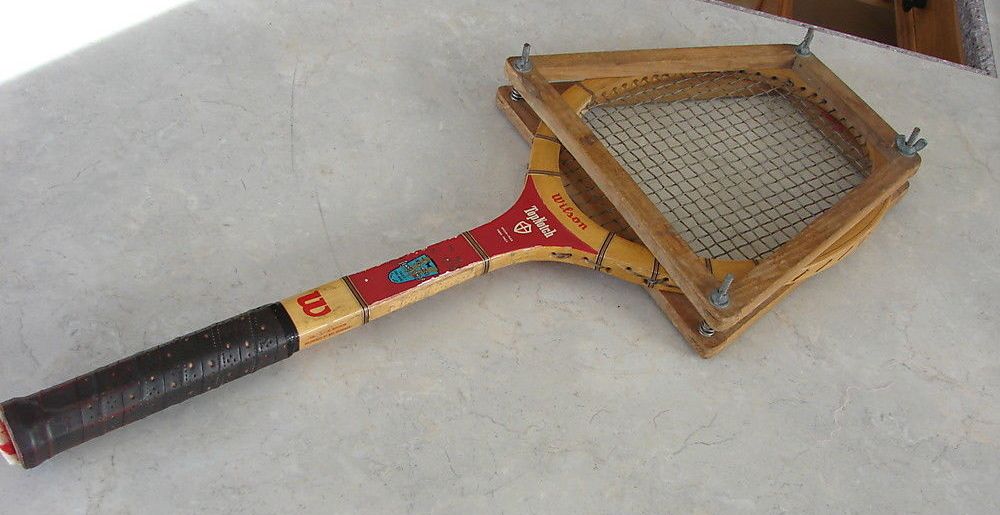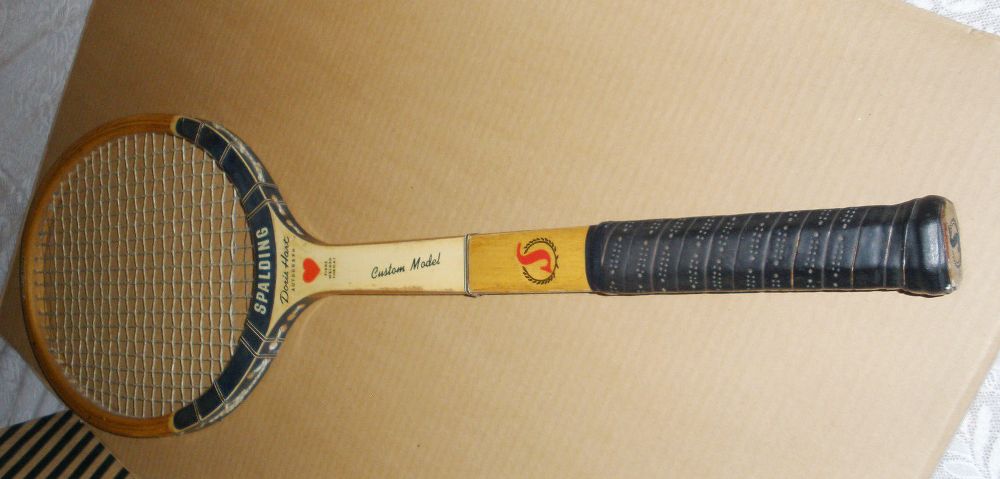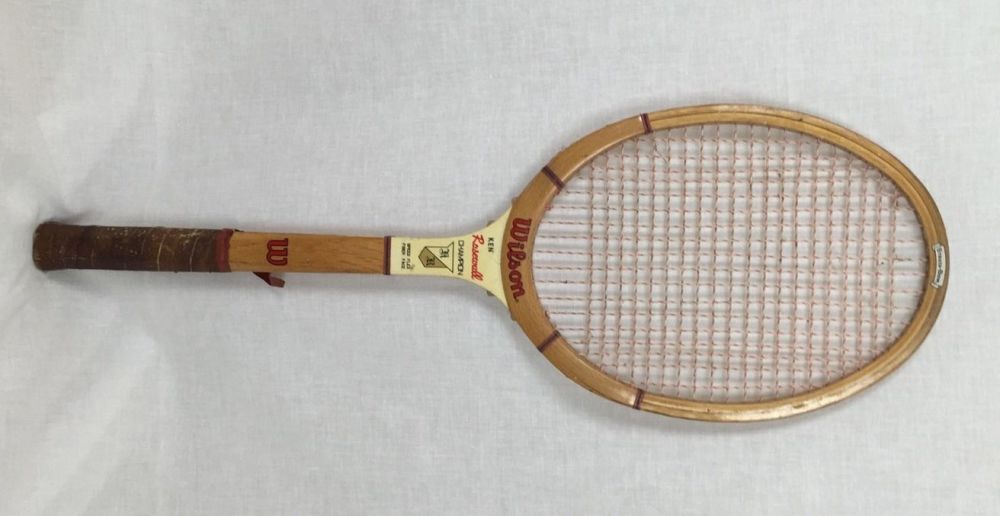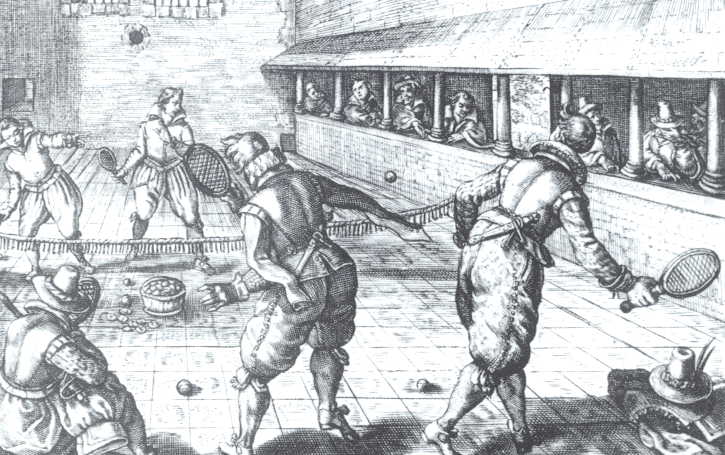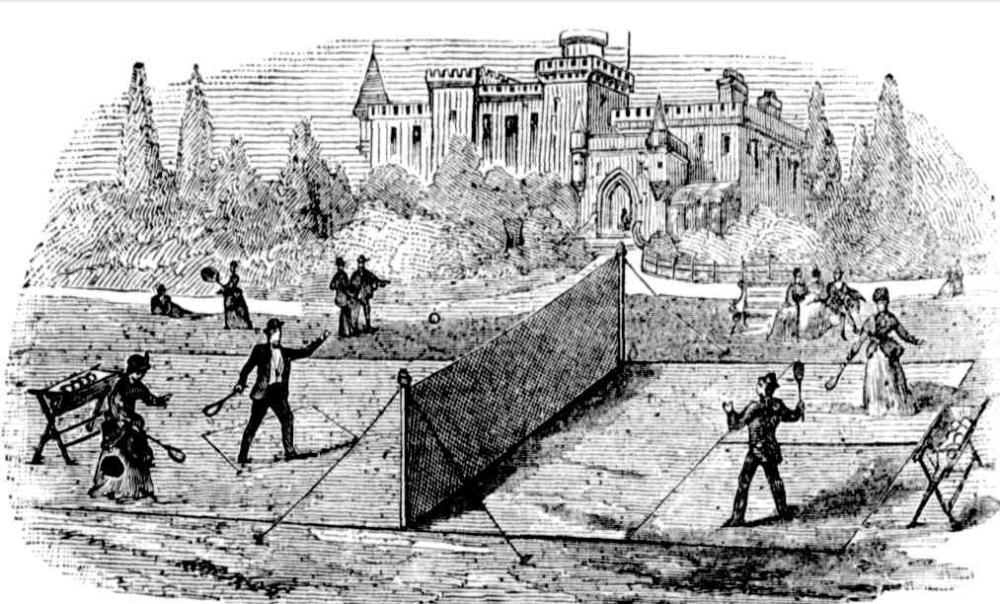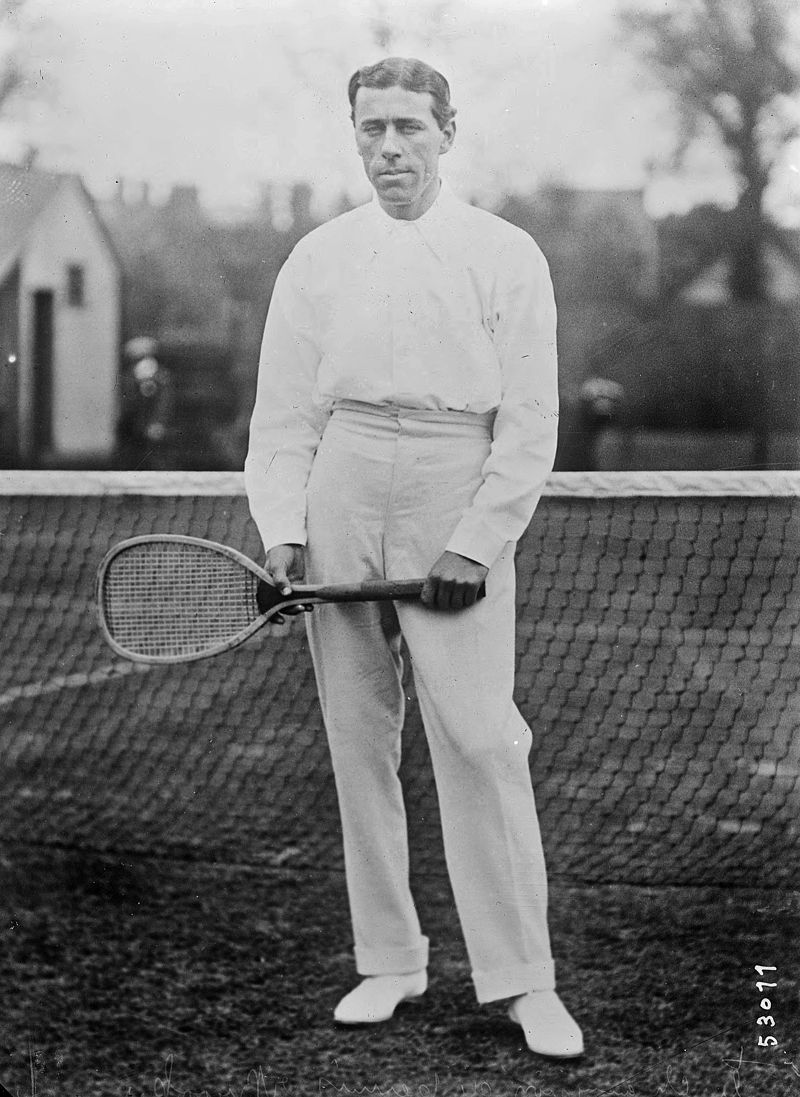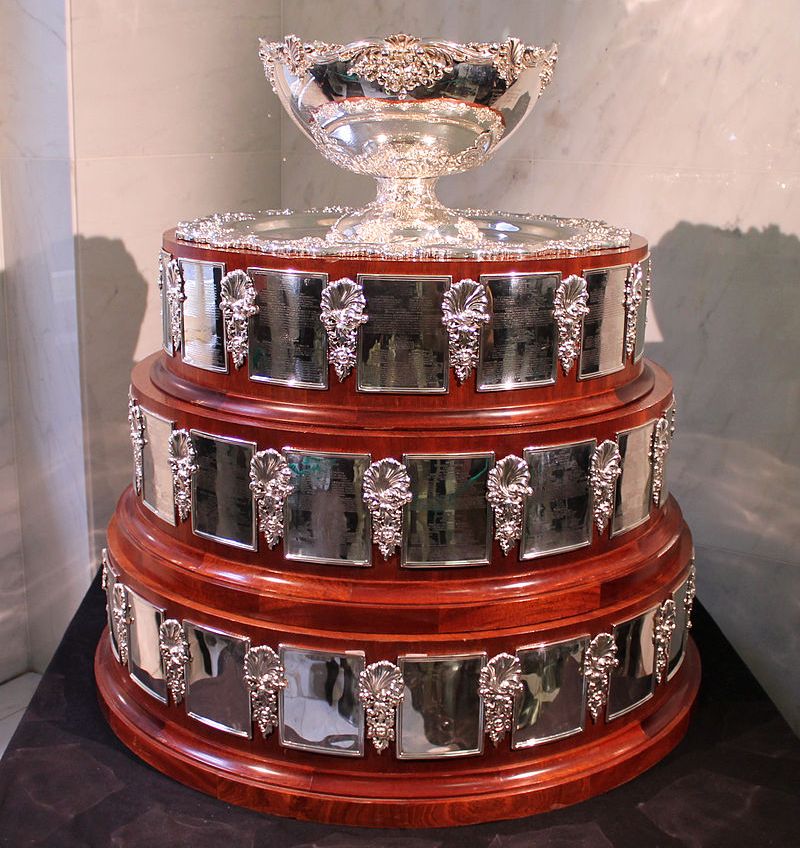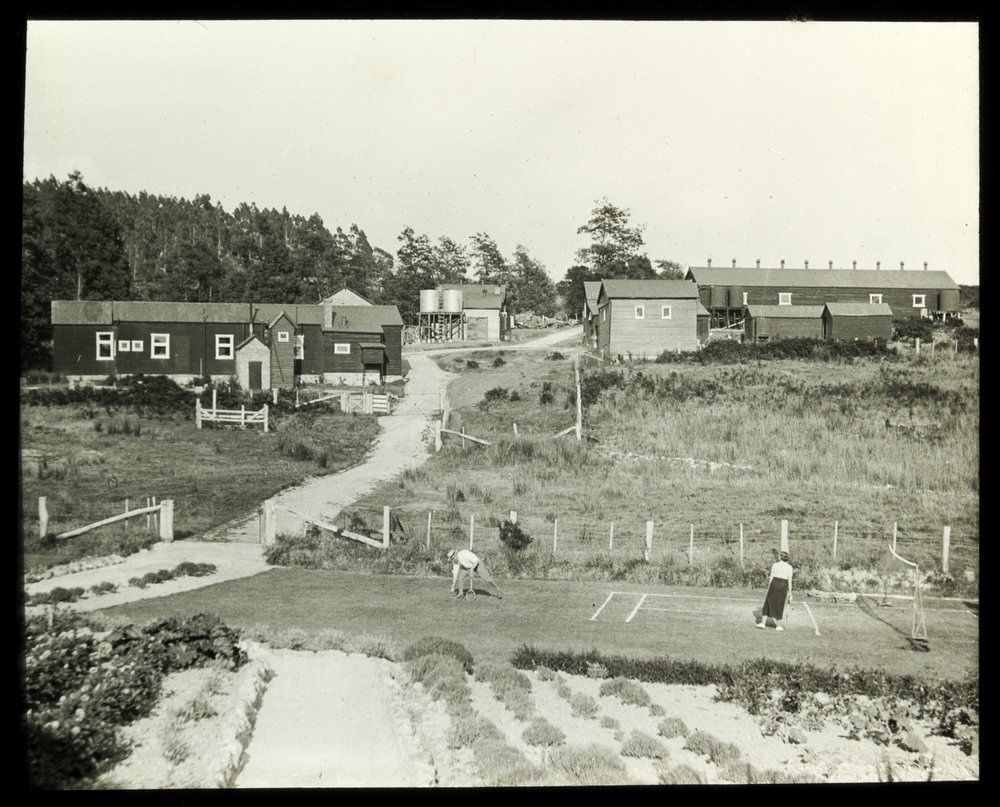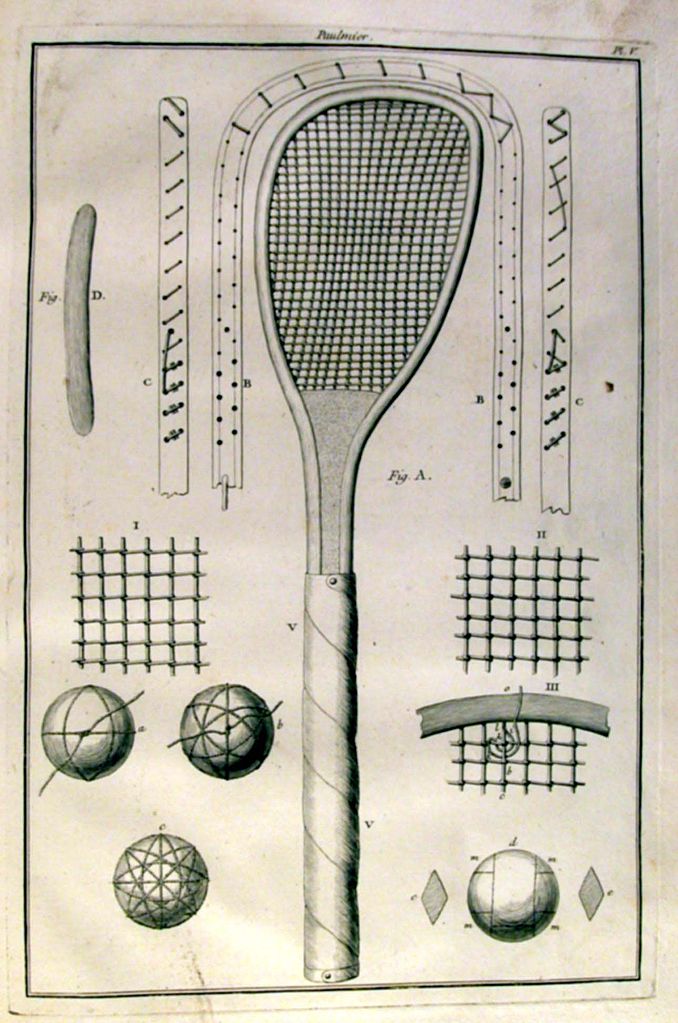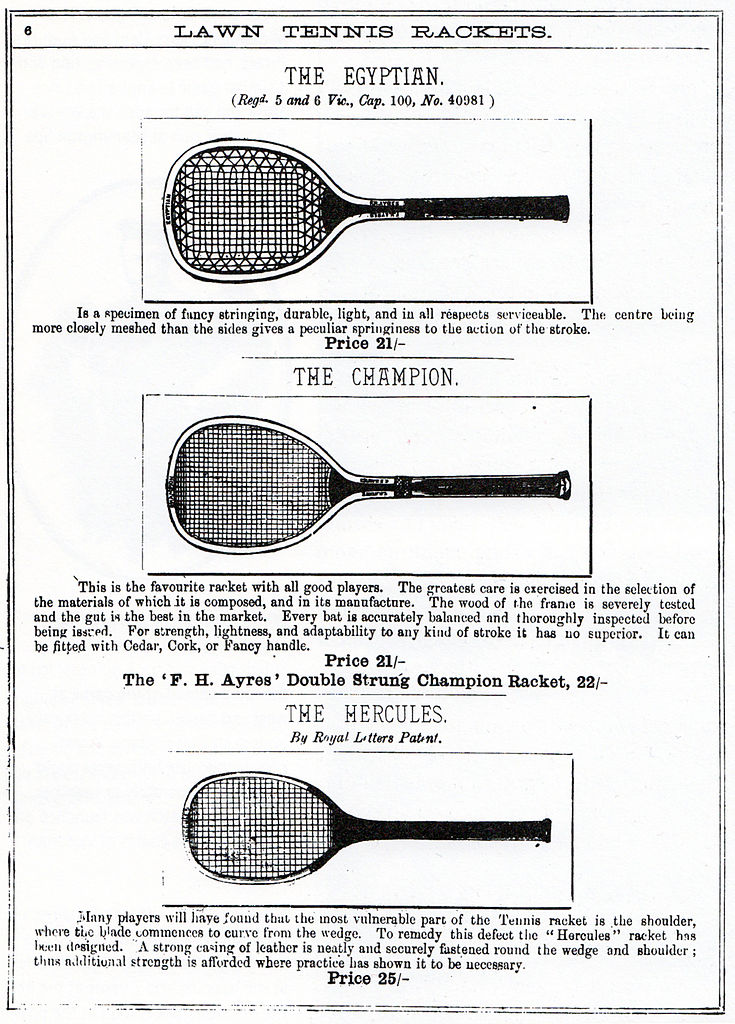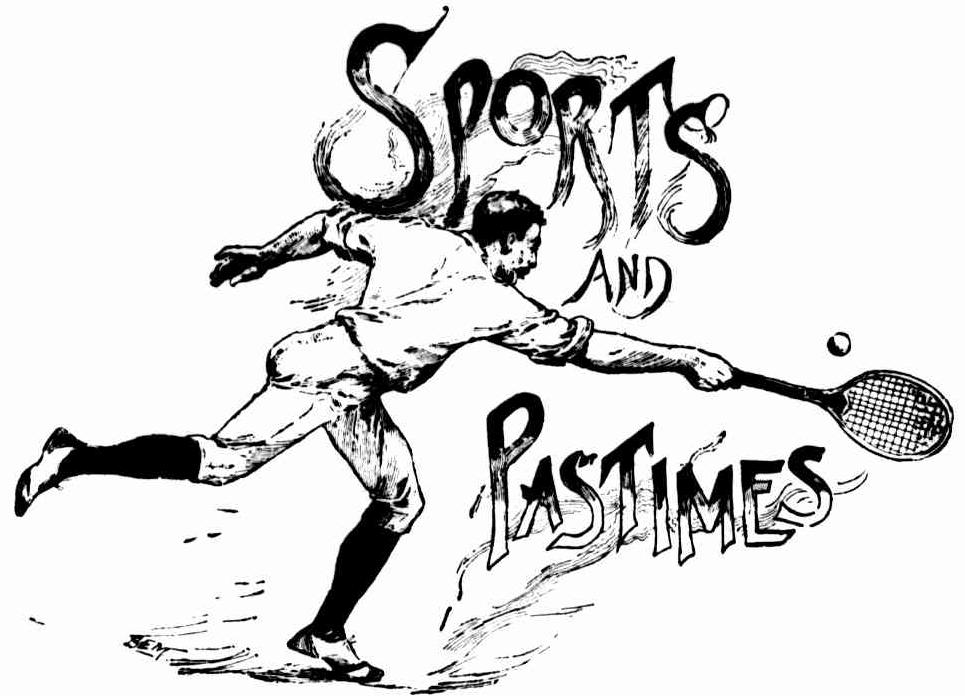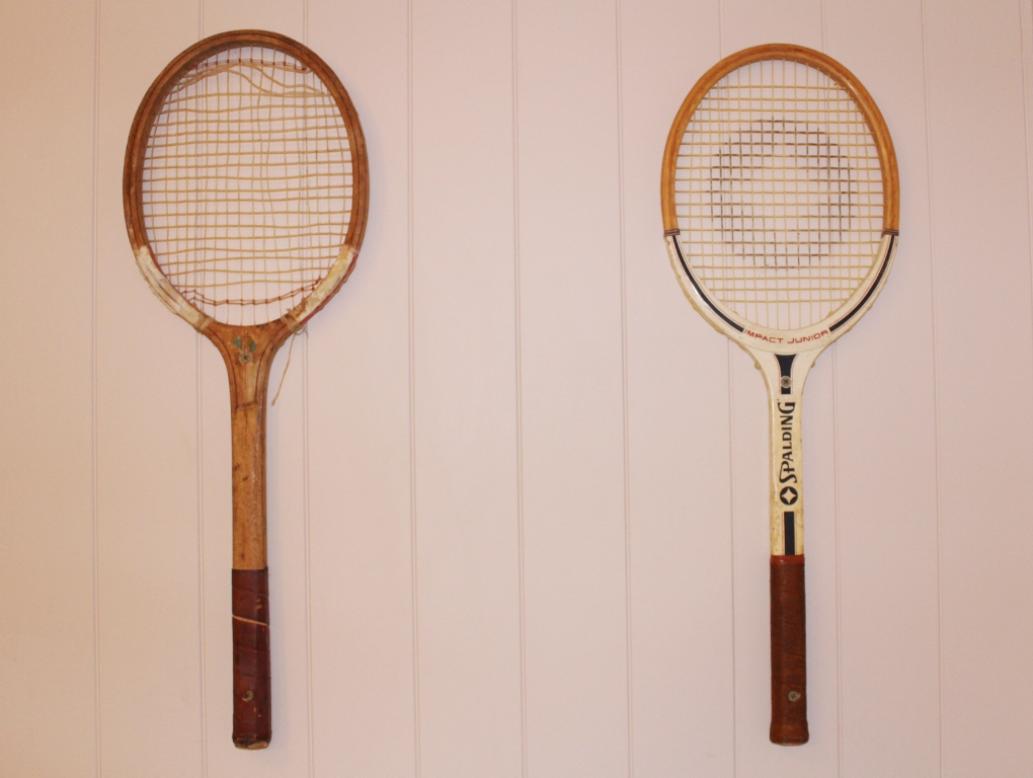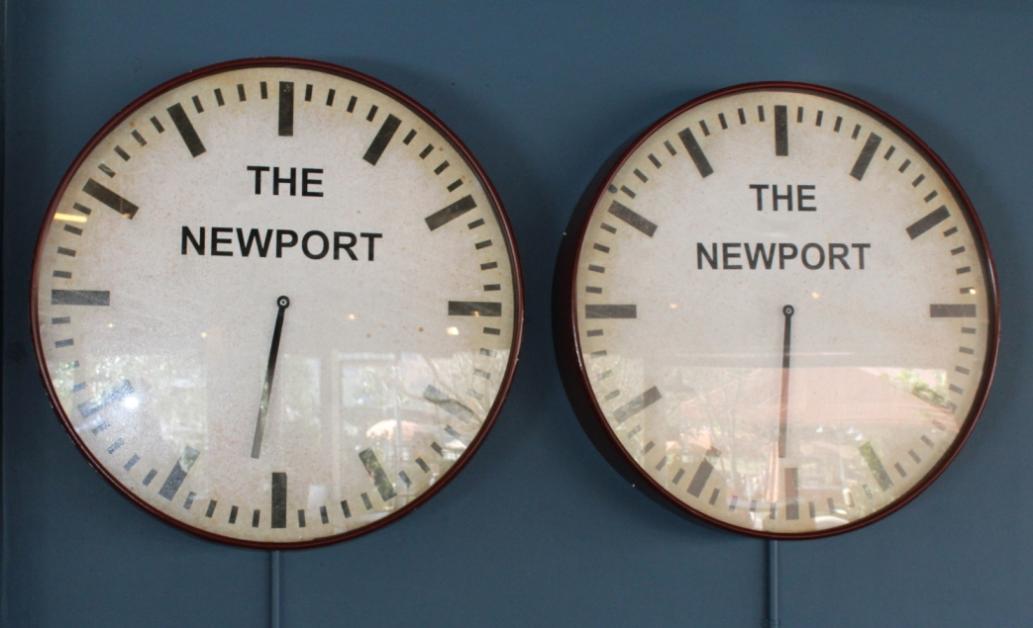Tennis. (2016, October 26). In Wikipedia, The Free Encyclopedia. Retrieved from https://en.wikipedia.org/w/index.php?title=Tennis&oldid=746265536
Norman Brookes. (2016, October 26). In Wikipedia, The Free Encyclopedia. Retrieved from https://en.wikipedia.org/w/index.php?title=Norman_Brookes&oldid=746355360
Davis Cup. (2016, October 25). In Wikipedia, The Free Encyclopedia. Retrieved from https://en.wikipedia.org/w/index.php?title=Davis_Cup&oldid=746159891
LAWN TENNIS.
WE wish to remind secretaries of the different lawn tennis clubs in Australia, that this column is especially intended to serve as a record of club doings in these colonies, and it is hoped they will send in from time to time accounts of their matches and notices of fixtures, together with any suggestions or questions relating to lawn tennis.
THE Victorian team this year is a strong one, including Messrs. Gr. Balfour, A. Chomley, H. DeLittle, B. Green, Peebles, and E. E. Shuter. Messrs. Highett, Bartram, and Bayles would possibly have been included, but they expressed their inability to play this year, owing to other engagements. Of the present team, four have played on one occasion in the Intercolonial match, Messrs. Green and Peebles being new to the team.
The New South Wales team consists of Messrs. C. W. Cropper, R. D. Fitzgerald, H. A. Huntley, E. M. S. Wells, H. B. Paterson, and Dr. F. B. Wilkinson. The first three are well enough known here; Messrs. Wells, Paterson, and Wilkinson play in the team for the first time. Mr. Wells has shown some good form on the grounds of the Association Club, of which he is a member. Dr. Wilkinson lately won the captaincy of the Phillip-street Club, that central resort of the hem monde of Sydney. Amongst the ladies who will probably visit Melbourne for the tournament week are Miss Scott and Miss Fitzgerald, lt is rumoured that the first-named lady will choose Mr. Cropper as her partner in the Mixed Doubles, Mr. Fitzgerald and his sister being the other pair. Mr. Cropper will probably, as usual, carry off a prize or two; he is just now in splendid condition and capital spirits, whilst his inexhaustible energy surprises even his friends. He may be described as the Atlas on whose shoulders lawn tennis rests -at all events in New South Wales. His labours at tournament time in Sydney are simply Herculean; he is then secretary, captain, champion, prize winner, gentleman usher, journalist, speech maker, dispute-settler, and general referee, and a whole host of other important functionaries into the bargain, keeping throughout as calm bearing as if he had been accustomed to that sort of thing all his life.
The grass courts at the Association Ground, Sydney, were opened for play on November 2nd, after having been carefully top-dressed. Lockers can be obtained from the secretary of the ground, Mr. S. H. Fairland, 99 Elizabeth-street. A separate room is now provided exclusively for the use of members.
It is a matter for regret that the Double-Handed event in the Asphalt Tournament at the Association Ground should have fallen through, especially as some of our players who are strong in a single- handed game fall utterly to pieces in a double, and seem to think it their duty to rush wildly all over the court after the ball, quite regardless of their partner.
The Championship Meeting and Open Tournament of the New Zealand Lawn Tennis Association is to be held on the 26th of December and three succeeding days. Want of space prevents us from more than mentioning the fact ; but we intend to give full particulars in our next issue.
Everyone in Melbourne is interested just now in the tournament week, which comes as a fitting termination to the excitements of the racecourse. This will be fully dealt with in our next issue ; and for the present WQ will record a few of the minor matches played amongst local clubs. I Zingari beat Sherbrooke (56 to 43 games). Gascoigne beat Royston on the Royston Club grounds (53 to 27 games) ; Price, A. Turnbull, Mursell, and Hewitt played for Gascoigne. Cheltenham beat Oakleigh at Cheltenham (66 to 54 games). The ladies of both clubs played as well as the gentlemen. The ladies of South Melbourne had a very close fight with the Moreland ladies, just beating them by two games (59 to 57 games). The Misses Peach (2), Hunting, and Wills played for Moreland ; Mrs. Trapp, and the Misses Ken- wick, Barnard, and Fox representing South Melbourne. A tournament was held by the Brighton Club on October 19. The South Yarra Tournament is being played; results will be given later.
A lawn tennis club has just been started in Shanghai, much to the astonishment of the natives. One was found prancing about wildly, trying to play a tune on a racquet, which he evidently thought to be the latest sort of musical instrument. He soon gave it up in despair, as he found it did not suit the popular comic songs of his fatherland.
We have to record several matches between local teams. Early in October a team from the London Chartered Bank met the Wahgunyah Club, for which Westenholm and Clark did good service. The club won by 26 games. In the St. Leonards v. Devonshire match, St. Leonards scored 9 sets to 2 sets (or 72 games to 52) ; Messrs Brennand, Chapman, Bennett, and M Thie represented the victorious team. Arthursleigh beat Devonshire (B team) by 5 games (46 to 41). On October 26 the first and second teams of the Devonshire and Stanmore Clubs met, the second team of the former club winning, whilst the Stan- more first team were in their turn the winners. In the match between the A teams Stanmore won 9 sets and 94 games, and Devonshire 9 sets and 93 games, the players being very closely matched. In the match between the B teams Devonshire won 6 sets and 45 games, to Stanmore 4 sets and 35 games. Messrs. Dowler, Wright. S. and A. Druce, Russell, and Deuchar played for Stanmore (A team), the Devonshires being Messrs. Bradley, Noble, M'Phie, Bennett, Brennand, and Chap- man. A few days previously the University Club defeated the Sydney Grammar School on the courts of St. Paul's College. The University scored 6 sets (57 games), and the Grammar School 5 sets (52 games). Allen and Sloman were the most successful for the 'Varsity, losing only one set. Wood, Mansfield, Huntley and Lamb ; and Allen, Sloman, Hutton and Westenholme, represented the Grammar School and University respectively. The Hydra and Mayflower Clubs met on October 27 : Mayflower, 3 sets, 37 games ; Hydra, 3 sets, 26 games. The A and B teams of the Stanmore and St. Leonards Clubs played on November 2 at Stanmore. The match between the first teams resulted in Stanmore winning 9 sets and 70 games, to 3 sets and 50 gaines ; the second team of Stanmore won by 3 sets, 48 games to 0 sets, 13 games.
The members of the Queensland Lawn Tennis Association are to be congratulated upon the success of their second annual tournament. At the time of going to press all the events had been concluded, with one exception-the Single Handicap.
The Association secured the new Sports' Ground at Breakfast Creek, and the scene on the lawn was brilliant, 'everyone' in Brisbane being there. The arrangements were eminently satisfactory.
The following are the result of the principal events :
All-comers' Singles.-R. R. Love and Hudson, of Auckland, met in the final. Hudson won the first set ; Love the second and third sets (6 to 4, 8 to 6, and 7 to 5). Hudson then played up hard, pulling off the next two sets (6 to 4 and 6 to 2), and the match therefore by 3 sets to 2. Hudson's services were very effective, whilst his volleys were surer than his opponent's. Love did some good placing. The following Saturday (October 5) Hudson met A. Taylor for the championship.
The court (of turf) was unfortunately rather spongy in places. Mr. Taylor is the captain of the Bachelors' Club (Brisbane). The match resulted in a victory for Mr. Hudson by three sets to two (26 to 24 games). Taylor's accurate volleying, endurance, and swift services secured him the victory. The play was the same all through, Taylor at the back hitting hard to Hudson on the service line, and the latter quietly placing the balls from one side of the court to the other. At the end of the match Taylor was completely exhausted. The All - comers' Double Championship was won by Messrs. A. Taylor and E. W. H. Fowles, who defeated Messrs. P. Macgregor and E. Gilligan by three sets to one (6 to 4, 6 to 8 ; 6 to 5, and 7 to 5). The play all round was good, but Macgregor's was particularly creditable, as he had only just recovered from a severe illness. The Ladies' All-comers' Singles (Championship) was the next event, and was carried off by Mrs. Quinnell (a member of the Brisbane Club) against Miss Earle. Mrs. Quinnell's ' backhanders ' were much applauded, whilst Miss Earle, with her overhand service, gained a good many points. The score was 6 to 1 and 6 to 0. There were some good ralleys during the sets. The final for the Scratch Pairs was played be- tween Miss Lee and Haughton, and Miss Earle and R. J. Cottell, jun. The former won both sets (6 to 3 and 6 to Ï). Miss Lee won the Ladies' Single Handicap. She owed half thirty, and received two bisques from Miss Burdorff with fifteen. The sets were 4 to 6, 6 to 4, and 6 to 5. In the first set Miss Lee omitted to take her bisques, which probably lost her the set. The court played badly, the balls rising with great uncertainty. Messrs. P. Macgregor and E. Gilligan won the Double Handicap, beating G. D'Arcy and E. Green (6 to 4, 6 to 3). Messrs. Taylor, Wilkinson, and H. C. Henzell were left in for the Single Handicap when we went to press.
A successful tournament has been held by the South Brisbane Club. The winners included Miss Earle, Mr. E. Chancellor, Miss M'Intosh, and Mr. Green ; Messrs. Green and Nagel, and Mr. W. T. Baynes.
The members of the Stanmore Club (founded in 1886) have just brought to a close their first annual tournament. The prizes were about ten pounds in value, and a good number of competitors entered for the various events. The following is a list of the winners :-Championship, L. Deuchar (won by P. Russell in 1888) ; Ladies' Champion- ship, Miss Bruce (won last year by Miss Robin- son) ; Handicap Singles-A. Druce first prize, W. Lake second prize ; Ladies' Singles, Handicap -First prize, Miss Bruce ; second prize, Miss Ryrie; Gentlemen's Doubles (Handicap), T. Deuchar and E. P. Rtissell; Mixed Dotibles (Handicap), Miss Hogg and E. G. Cooper.
In a recent issue of one of the English papers there was an interesting article on lawn tennis in Australia, giving an account of the progress of the game here since its introdriction. Australians are often accused of being too boastful of their own merits, but certainly the writer was much too modest in speaking of 'the best of the players here being mainly indebted to the columns of Pastime and the Field for what little excellence they have attained ;' whilst, on the other hand, it must be admitted that our best men are considerably more than ' half-thirty ' behind first-class English players, which is the somewhat rash guess of the 'Occasional Correspondent' just quoted. He pleads for uniformity of lawn tennis balls, and points out the absurdity of covered balls being used in New South Wales, whilst uncovered balls are the rule in the other colonies. It is to be regretted that there is no Australian Association to settle such points as this, and ensure the game being kept to as high a pitch of excellence as possible.
American journalism is notorious for the personalities it indulges in. Lawn tennis players have hitherto escaped pretty freely. Mr. H. W. Slocum, jun., the Champion of the United States, has, however, lately come in for his share. The following reads almost as if it were a cutting from a sporting contemporary, the circulation of which is said to have increased in a neighbouring colony since its suppression there : ' He was said to be married. He is ; but that has only steadied his play. He was thought to be out of practice ; but that was because he has practised hardest in private !' Roni soit qui mal y pense !
MR. H. R. CROSSMAN.
A Melbourne correspondent (E. West, St. Kilda) asks us for an opinion on a very curious point. It appears that he was playing in a tournament in a double event with rather an old racquet, which had not been improved by the rain which had fallen during the day. One of his opponents returned a ball to him with great force, as he was standing on the service line prepared to volley it back. To his horror the gut gave and the ball stuck fast. His opponents stood waiting for the return. He took the ball out, threw it over with his hand, and claimed the point. He had no right to do so in this case, but had he been able to walk up to the net and calmly shake his racquet about until the ball fell out of its own accord without actually being touched, he would, we think, have been perfectly justified in scoring had his adversaries been unable to keep the rally up.
Another knotty point is referred to us from Adelaide. In a double match, A served when it was the turn of his partner B. During the rally B found out the error, and stopped the ball, explaining his reason. The umpire counted A's service as a fault, and told B to continue the ser- vice. The umpire was wrong in considering A's service a fault, since the mistake was discovered before the stroke being played for was actually decided. The rule says, ' If a player serve out of his turn the umpire, as soon as the mistake is discovered by himself, or one of the players, shall direct the player to serve who ought to have served, but all strokes scored, and any stroke served before such discovery is made, shall be reckoned.' Consequently there seems little doubt that B, when ordered to serve, should have been granted both Iiis serves instead of A's fault being taken into consideration.
According to Pastime there is a gradual leaning towards covered courts, of which a large number flourish in England now. It is possible even that some of the more enragés devotees of the covered court game will decide to eschew grass courts altogether. The temptation to do so is less here than in England, where the uncertainly of the weather, and the windy days, often spoil sport. Still there are a great number of bad grass courts in Australia, unlevel, full of holes, and bumpy, and one or two good covered-in courts, with a perfectly level floor, whether of asphalt, cement, or ' composition/ would be most welcome in Melbourne and Sydney. SPORTS AND PASTIMES. (
1889, November 14).
Illustrated Sydney News (NSW : 1853 - 1872), p. 9. Retrieved from
http://nla.gov.au/nla.news-article63622228
THE ART OF LAWN TENNIS
Memories of Men and Meetings
(By Dr. L. O. S. POIDEVIN.)
Some of the most pleasant spots among my lawn tennis memories have their setting in and around my experiences of the play of H. L. Doherty (England's, champion player), N. E. Brookes (our own champion of the past), and A. F. Wilding, the champion player of New Zealand. The English player reached the zenith of his career before either of the other two reached their best. I had the great good fortune to see much of Laurie Doherty, or 'Little Do' (pronounced Doe) during his greatest years. Indeed. I saw him win the All-England championship for the first time, in 1902, and also in the four succeeding years, as well as witnessing his many victories in the All-England covered court championships in Davis -Cup contests, and in other lesser events. English opinion regards him as 'the best ever' in the game of lawn tennis — and well it might.
LAURIE DOHERTY'S RECORD.
From the time he won the All-England covered court singles championship, in 1901, until his retirement from championship play, in 1906, he never suffered a reverse in singles. During this period he won the covered court singles championship for sir. years in succession ; the All-England singles championship from 1902 to 1906 inclusive ; the American singles championship on the only occasion on which he competed for it ; every Davis Cup and international singles con test in which he took part, besides every other singles championship for which he competed. ; During the same period he won all the . doubles championships in which he competed, with the exception of one defeat ' in 1902 — the All-England doubles championship with his brother R.F. ; the American championship twice with R.F. (the only two occasions on which he competed) ; the covered court doubles championship (in all he won it for nine 'years in succession, seven times with R.F., and twice with G. W. Hillyard) ; every Davis Cup and other international doubles contest in which he competed. Is it any wonder that in England he is regarded as 'the best ever ?'
HIS SUPREMACY UNCHALLENGED.
Doherty's supremacy during all that period remained unchallenged in the public mind, and in that of the lawn tennis community. Only once, in 1905, ?when Norman Brookes swept all opposition aside in the championship at Wimbledon, and came through one of the strongest fields that ever competed there, was Little Do's supremacy really challenged. Their meeting in the challenge round was fraught with tremendous interest, but the result was a great disappointment from the Australian standpoint, for Doherty won quite easily in three straight sets. Two of the hardest matches I think I ever saw him play were against Ward and Lamed m a Davis Cup challenge round at Wimbledon. Lamed, who was the champion of America at the time, and who had just previously in the final round beaten both Brookes and Wilding setless, and Ward, champion of America in 1904, were at the very top of their form. In the first of these matches Ward caused a sensation by winning the first two sets, 9-7 and 6-4, by most brilliant play: but from this point to the end of the match the steadiness, accuracy and determination of Doherty pulled the game round. He won the third set 6-1, and the fourth 6-2. A great fight was expected in the final set, but Little Do was too good, running out the victor with a love set. In the second match Larned won the second and third sets, but here again Doherty successfully called up his reserves and won the final set in masterly fashion. The scores were 6-4, 2-6, 6-8, 6-4, 6-2.
A LAWN TENNIS GENIUS.
He was a genius with the racket. Very small in stature, and slight in build, he was remarkably restive and quick-footed on the court. As a matter of fact, he won the 100 yards and the high jump at his school— Westminster — before going to Oxford. His service was quite moderate in pace, carrying just enough ordinary cut to bring it down slightlv when nearing the ground, and to keep it fairly low on the bounce. The other main features of his service were its length, which was invariably the maximum either on or witnin a few inches of the service line every time, and its subtle variations in direc tion and speed. There was no appreciable difference between his first and his second. What struck me most about the length of his service was the fact that, as the ball approached you, it seemed certain that it would be a fault; ?when, at the last moment it would dip sufficiently to just clip the chalk line. ( He was remarkably accurate with his ( F-rst service, and comparatively seldom i needed a second. Though his service was quite amiable looking compared ?with those of his American opponents Doherty could follow it into the net and volley his way to victory with the best of them.
ALL-ROUND EXCELLENCE.
His volleying was magnificently certain and always of masterly length. Overhead he was the surest winner that I have ever seen, and yet his smashing was never severe as regards speed. It was severity and certainty combined as regards length and placing. Nearly everything overhead was a certain winner for him. His ground strokes were excellent as regards length, accuracy and direction on both backhand and fore hand; his passing shots were made with studious certainty and unhurried deadliness. There was not a blemish nor a weak spot in his stroke equipment. So well equipped was he for every emergency that he was equally at home near the net or at the back of the court, and he could therefore play either: a volleying game or a base-line game according to the' needs of the occasion. Generally he favored a judicious combination of the two. He did not rely: on any one aspect of his game for success nor on any novelty in his -methods, nor on any special development of one or another feature of the game, but on the actual perfection of his all-round skill, backed by an unusual development of the lawn tennis instinct. As be comes a champion, he was remarkably quick and intuitive with his interceptions.
STRIKING CHARACTERISTICS.
There are other striking characteristics of his play that must be mentioned. He was never in any great hurry, for instance, to win his points, relying on his accuracy to give him time to enable him to outmanoeuvre his opponents, and, again, he never by any chance failed to win the easy ones or anything that gave him a reasonable chance of winning. So sure and so accurate was he with his stroke' play that you had to beat him clean to win four points from him. He always gave the impression of having plenty of re serve, and he proved it whenever it was necessary to put forth a special effort. So sure was he of himself that he would frequently refuse to be drawn into extra effort to get back the seemingly impossible and put up a weak return which in the end was almost sure to be lost, preferring to let such strokes go altogether. This faculty of calling up reserves of skill and giving of the best precisely when it is most needed is, _ of course, characteristic of the champions in all games.
TEMPERAMENT AND PERSONALITY.
Doherty's court manners and his temperament were alike ideal. His facial expression on the court, though always pleasant, never gave the slightest clue to his innermost thoughts: he never showed the slightest irritation at the most glaring umpires mistakes. He played the game always quietly, seriously and without the slighest show of ostentation, accepting the successes and reverses of the play with the same good grace and unvarying courtesy to all. He was a charming personality. It is an interesting fact that all the champions in lawn tennis and in other games have a definite personality, though they may be men of seemingly different temperament. There is no dearth of illustrations of the point. Take lawn tennis, cricket and golf. There is an extraordinary temperamental analogy, for instance, between Norman Brookes, MA. Noble and James Braid on the one hand and W T Tilden Clem Hill and Harry Vardon on the other. Silent, thoughtful self-contained individuals the men of the former group, belonging to the dour, determined type of player in their respective games. Brooke-; a master of strength and finesse, an inspiring partner and a most impressive opponent, his sphinx-like features on the court tell you nothing, but he makes you feel that not only is he playing lawn tennis of the highest order, but that he is playing you. On the court cool, calculating and exhibiting always the imperturbality of a K.C., with a readiness of resource in his play and tactics that enables him to give of his best on the great occasion.
LIKE M.A.N. IN CRICKET.
Off the court a genial and kindly personality, with a most generous sense of appreciation of merit in others. M. A. Noble was such another in the game of cricket. At the wicket or in the field a most inspiring comrade and a most thoughtful and determined adversary. When bowling at you it was a case of man against man all the time, as anyone who has experienced that inquiring look of his after every ball, as if reading its effect upon you. With the bat he could be very much what ever the occasion demanded, as deter- j mined a cricketer as the game has known, unruffled when things were go ing wrong and never showing the slightest surprise or exaltation in the moment of victory. Few cricketers have turned the fortunes of their side into the track of victory so frequently and so consistently as he has done.
AND BRAID IN GOLF.
James Braid, wonderful golfer in his day, though but little known out here, had the ideal temperament. A big man physically, with a very stout heart, who was always at his best in the last round of the open golf championship. He displayed the same silent, thoughtful demeanor of Brookes and Noble, and his play was characterised by the same dogged perseverance and determination, and the same remarkable self-centred imperturbability. It was vastly different with his rival — Harry Vardon — most brilliant in execution, but rather likely to be upset by trifles. TILDEN AND CLEM HILL. j W. T. Tilden and Clem Hill, in their j respective spheres, are examples of the j mercurial, built-on-springs disposition. Men who play their games with a seeming gaiety of manner expressive of their genial personality, rather than ot their real outlook on the game, which was one of the closest concentration, j They, too, have, displayed the faculty of j calling up their reserves of skill, and of giving of their best precisely when it was needed. Their superlative skill has had the guidance in its application of the right mental attributes. That is the mark of the champion in all games, and in none more so, perhaps, than in lawn tennis.
DOHERTY AND TRUMPER.
H. L. Doherty, in temperament, stood somewhere between these two groups with the same silent, self-contained, determined demeanor of the former. He came nearer to perfection at lawn tennis than any other player I have ever seen. He did not influence the modern game, perhaps, i.e., as regards its development quite as much as some players of inferior skill in other countries, because he did not inaugurate any thing new in methods or strategy. He certainly set a standard of excellence. It is only given to the few, however, to even approximate to the same degree of perfection in technical skill as Laurie Doherty, and then even if the few could so approximate they are not likely to emulate his temperament and personality, which were the final elements in the attainment of his exceptional proficiency any more than any one can successfully imitate our own 'greatest ever' of cricket — Victor Trumper. THE ART OF LAWN TENNIS. (1923, January 5). Arrow (Sydney, NSW : 1916 - 1933), p. 11. Retrieved from http://nla.gov.au/nla.news-article103540389 